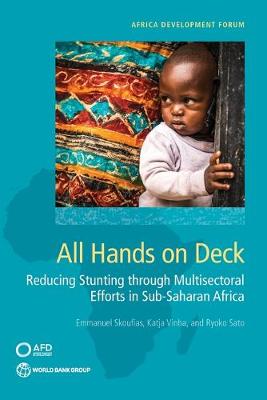In Sub-Saharan Africa, the scale of undernutrition is staggering; 58 million children under the age of five are too short for their age (stunted), and 14 million weigh too little for their height (wasted). Poor diets in terms of diversity, quality, and quantity, combined with illness and poor water and sanitation facilities, are linked with deficiencies of micronutrients - such as iodine, vitamin A, and iron - associated with growth, development, and immune function. In the short term, inequities in access to the determinants of nutrition increase the incidence of undernutrition and diarrheal disease. In the long term, the chronic undernutrition of children has important consequences for individuals and societies: a high risk of stunting, impaired cognitive development, lower school attendance rates, reduced human capital attainment, and a higher risk of chronic disease and health problems in adulthood. Inequities in access to services early in life contribute to the intergenerational transmission of poverty. Recent World Bank estimates suggest that the income penalty a country incurs for not having eliminated stunting when today's workers were children is about 9-10 percent of gross domestic product per capita in Sub-Saharan Africa. Much of the effort to date has focused on the costing, financing, and impact of nutrition-specific interventions delivered mainly through the health sector to reach the global nutrition targets for stunting, anemia, and breastfeeding, and interventions for treating wasting. However, the determinants of undernutrition are multisectoral, and the solution to undernutrition requires multisectoral approaches. An acceleration of the progress to reduce stunting in Sub-Saharan Africa requires engaging additional sectors - such as agriculture; education; social protection; and water, sanitation, and hygiene (WASH) - to improve nutrition. This book lays the groundwork for more effective multisectoral action by analysing and generating empirical evidence to inform the joint targeting of nutrition-sensitive interventions. Using information from 33 recent Demographic and Health Surveys (DHS), measures are constructed to capture a child's access to food security, care practices, health care, and WASH, to identify gaps in access among different socioeconomic groups; and to relate access to these nutrition drivers to nutrition outcomes. All Hands on Deck: Reducing Stunting through Multisectoral Efforts in Sub-Saharan Africa addresses three main questions: Do children have inadequate access to the underlying determinants of nutrition? What is the association between stunting and inadequate food, care practices, health, and WASH access? Can the sectors that have the greatest impact on stunting be identified? This book provides country authorities with a holistic picture of the gaps in access to the drivers of nutrition within countries to assist them in the formulation of a more informed, evidence-based, and balanced multisectoral strategy against undernutrition.
- ISBN10 1464813965
- ISBN13 9781464813962
- Publish Date 30 July 2019
- Publish Status Active
- Publish Country US
- Imprint World Bank Publications
- Format Paperback
- Pages 190
- Language English
